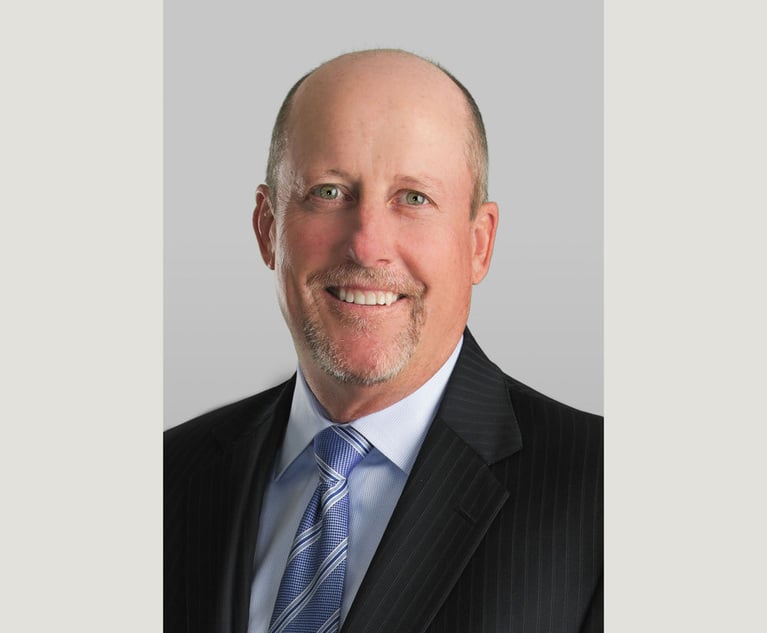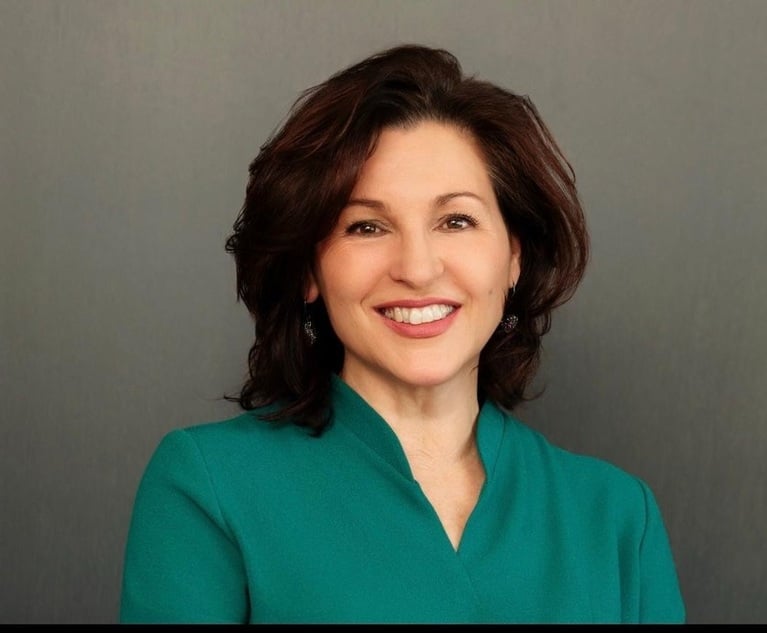Part I: The Strange Tale of How Elite US Firms Surpassed Their UK Counterparts
The first in a three-part series looking at competition between elite US and UK firms. Part I presents evidence that the US elite has vanquished their UK counterparts
August 02, 2017 at 10:13 AM
6 minute read
 Part I: The evidence that the US elite have eclipsed the UK's magic and silver circle firms
Part I: The evidence that the US elite have eclipsed the UK's magic and silver circle firms
Editor's Note: this is the first in a three-part series looking at competition between elite US and UK firms. Part I presents evidence that the US elite has vanquished their UK counterparts; Part II examines how this victory came about; and Part III draws out lessons for firms of all types.
The top end of the legal world has long been dominated by a small group of elite US firms and their UK counterparts—the magic and silver circles. But no more. The US elite have left their UK brethren behind. The proof? Lateral partner movement between the two shows that US firms have a clearly established an upper hand. The higher profitability of the elite US firms, combined with their wider compensation bands, has rendered the UK elite unable to compete on remuneration for the most commercially-successful partners.

Talent flow among the global elite
To appreciate the US elite's victory, it helps to start with a view of competition. Well-matched competitors score against each other in a steady back-and-forth. Thus, for competitor law firms, one would expect to see healthily reciprocal flow in lateral partners—for each partner won, there would be another lost. However, for the elite US and UK firms (as identified in Figure 1) the data show the a lopsided exchange: of the 35 partners who moved laterally between elite US and UK firms in the past five years, 29 were to the US elite from the UK elite; only 6 were in the opposite direction, (see Figure 2).

The asymmetry is even more stark in each group's home market: 14 partners moved to the US elite from the UK elite in London; only 2 moved from the US elite to the UK elite in the US. Lateral movement was especially robust last year—2016 accounts for almost half of the 5-year total, indicating the lopsided flow is unabated. Just three law firms—Kirkland & Ellis, Gibson Dunn, and Davis Polk—account for the bulk of the US elite's hiring. Each of these firms has gained more partners than they have lost to their elite UK counterparts. In contrast, net losses pervade the UK firms.
Profit and compensation differentials
As one would expect, this one-sided flow in partner talent aligns with the difference in profitability between the US elite and their UK counterparts. What one might not expect is just how wide the profit gap has become. With the exception of Slaughter and May, the low profitability end of the US elite is operating at profit per equity partner (PPP) levels some 30 to 60 percent above their UK counterparts, see Figure 3. Note that this gap is not an artifact of current exchange rates as the analysis uses long-term equilibrium exchange rates (i.e. purchasing power parity) both for converting the UK firm's non-sterling revenues into sterling, and again for converting bottom-line sterling-denominated profits into dollars.

Differences in firm average profitability tend to understate the differences in compensation for more commercially-successful partners. For these partners, firm compensation ratios—the difference between the highest and lowest paid partner cohorts—play an important role. US firms are increasingly moving to systems wherein individual partner compensation more closely reflects a partner's contribution to firm profit. UK firms, by contrast, are still operating on variations of lockstep systems wherein a partner's compensation is less tied to their individual contribution to firm profit and is more driven by firm average profitability and partner seniority.
This difference in compensation philosophy has led to US and UK firms having very different ratios between the compensation of highest and lowest earning partners. Last December, for example, Kirkland & Ellis moved from an 8:1 to a 9:1 ratio between the compensation of their top and bottom bands. Lockstep firms traditionally operate at about a 2.5:1 ratio.
So how big is the compensation difference at the top end? For a 9:1 firm, a reasonable rule of thumb is that the lowest compensated partners earn about one third of firm average while the top tier earn about 3 times firm average. Similarly, for a 2.5:1 lockstep firm, a reasonable estimate of the range is from 0.60 to 1.5 times firm average. Applying these ratios to an elite US firm with average compensation of $3.5m, and a Magic Circle firm with average compensation of $2.0m, reveals that compensation at the top end of the US firm is about 3.5 times that at the UK firm, see Figure 4.

Of course, many UK firms have departed from a strict one-firm lockstep model and, in particular, have gone off lockstep at the high end. How far off have they gone? In the public Companies House filings of the magic and silver circle firms, the highest ratio of top compensation to average compensation identified is 2.3 times. This implies a ratio of lowest to highest compensation of 5:1. This closes the gap to a 9:1 US firm from 3.5 times to 2.3 times. Thus, even with departures from lockstep, the US elite can offer the top end of partners a compensation premium that would not go unnoticed by would-be movers.
* * * *
Part II of this three-part series looks at the origins of this performance gap, its momentum through the great recession, and how it is unlikely to be closed.
 Nicholas Bruch is a Senior Analyst at ALM Legal Intelligence. His experience includes advising law firms and law departments in developing and developed markets on issues related to strategy, business development, market intelligence, and operations. He can be reached by Email, Twitter, or LinkedIn.
Nicholas Bruch is a Senior Analyst at ALM Legal Intelligence. His experience includes advising law firms and law departments in developing and developed markets on issues related to strategy, business development, market intelligence, and operations. He can be reached by Email, Twitter, or LinkedIn.
 Hugh A. Simons is an ALM Intelligence Fellow. He is a former senior partner and executive committee member at The Boston Consulting Group and the former chief operating officer at Ropes & Gray. He is currently conducting research for a book on the fundamentals of elite law firm strategy.He can be reached by Email
Hugh A. Simons is an ALM Intelligence Fellow. He is a former senior partner and executive committee member at The Boston Consulting Group and the former chief operating officer at Ropes & Gray. He is currently conducting research for a book on the fundamentals of elite law firm strategy.He can be reached by Email
![]()
This content has been archived. It is available through our partners, LexisNexis® and Bloomberg Law.
To view this content, please continue to their sites.
Not a Lexis Subscriber?
Subscribe Now
Not a Bloomberg Law Subscriber?
Subscribe Now
NOT FOR REPRINT
© 2025 ALM Global, LLC, All Rights Reserved. Request academic re-use from www.copyright.com. All other uses, submit a request to [email protected]. For more information visit Asset & Logo Licensing.
You Might Like
View All
Indian Law Firm Cyril Amarchand Rolls Out AI Strategy, Adopts Suite of AI Tools

Latest Boutique Combination in Florida Continues Am Law 200 Merger Activity
3 minute read
How I Made Managing Partner: 'Be the Uniting Voice of the Firm,' Says George Ogilvie of McDonald Carano
Trending Stories
- 1Big Law Firms Sheppard Mullin, Morgan Lewis and Baker Botts Add Partners in Houston
- 2Lack of Jurisdiction Dooms Child Sex Abuse Claim Against Archdiocese of Philadelphia, says NJ Supreme Court
- 3DC Lawsuits Seek to Prevent Mass Firings and Public Naming of FBI Agents
- 4Growth of California Firms Exceeded Expectations, Survey of Managing Partners Says
- 5Blank Rome Adds Life Sciences Trio From Reed Smith
Who Got The Work
J. Brugh Lower of Gibbons has entered an appearance for industrial equipment supplier Devco Corporation in a pending trademark infringement lawsuit. The suit, accusing the defendant of selling knock-off Graco products, was filed Dec. 18 in New Jersey District Court by Rivkin Radler on behalf of Graco Inc. and Graco Minnesota. The case, assigned to U.S. District Judge Zahid N. Quraishi, is 3:24-cv-11294, Graco Inc. et al v. Devco Corporation.
Who Got The Work
Rebecca Maller-Stein and Kent A. Yalowitz of Arnold & Porter Kaye Scholer have entered their appearances for Hanaco Venture Capital and its executives, Lior Prosor and David Frankel, in a pending securities lawsuit. The action, filed on Dec. 24 in New York Southern District Court by Zell, Aron & Co. on behalf of Goldeneye Advisors, accuses the defendants of negligently and fraudulently managing the plaintiff's $1 million investment. The case, assigned to U.S. District Judge Vernon S. Broderick, is 1:24-cv-09918, Goldeneye Advisors, LLC v. Hanaco Venture Capital, Ltd. et al.
Who Got The Work
Attorneys from A&O Shearman has stepped in as defense counsel for Toronto-Dominion Bank and other defendants in a pending securities class action. The suit, filed Dec. 11 in New York Southern District Court by Bleichmar Fonti & Auld, accuses the defendants of concealing the bank's 'pervasive' deficiencies in regards to its compliance with the Bank Secrecy Act and the quality of its anti-money laundering controls. The case, assigned to U.S. District Judge Arun Subramanian, is 1:24-cv-09445, Gonzalez v. The Toronto-Dominion Bank et al.
Who Got The Work
Crown Castle International, a Pennsylvania company providing shared communications infrastructure, has turned to Luke D. Wolf of Gordon Rees Scully Mansukhani to fend off a pending breach-of-contract lawsuit. The court action, filed Nov. 25 in Michigan Eastern District Court by Hooper Hathaway PC on behalf of The Town Residences LLC, accuses Crown Castle of failing to transfer approximately $30,000 in utility payments from T-Mobile in breach of a roof-top lease and assignment agreement. The case, assigned to U.S. District Judge Susan K. Declercq, is 2:24-cv-13131, The Town Residences LLC v. T-Mobile US, Inc. et al.
Who Got The Work
Wilfred P. Coronato and Daniel M. Schwartz of McCarter & English have stepped in as defense counsel to Electrolux Home Products Inc. in a pending product liability lawsuit. The court action, filed Nov. 26 in New York Eastern District Court by Poulos Lopiccolo PC and Nagel Rice LLP on behalf of David Stern, alleges that the defendant's refrigerators’ drawers and shelving repeatedly break and fall apart within months after purchase. The case, assigned to U.S. District Judge Joan M. Azrack, is 2:24-cv-08204, Stern v. Electrolux Home Products, Inc.
Featured Firms
Law Offices of Gary Martin Hays & Associates, P.C.
(470) 294-1674
Law Offices of Mark E. Salomone
(857) 444-6468
Smith & Hassler
(713) 739-1250









